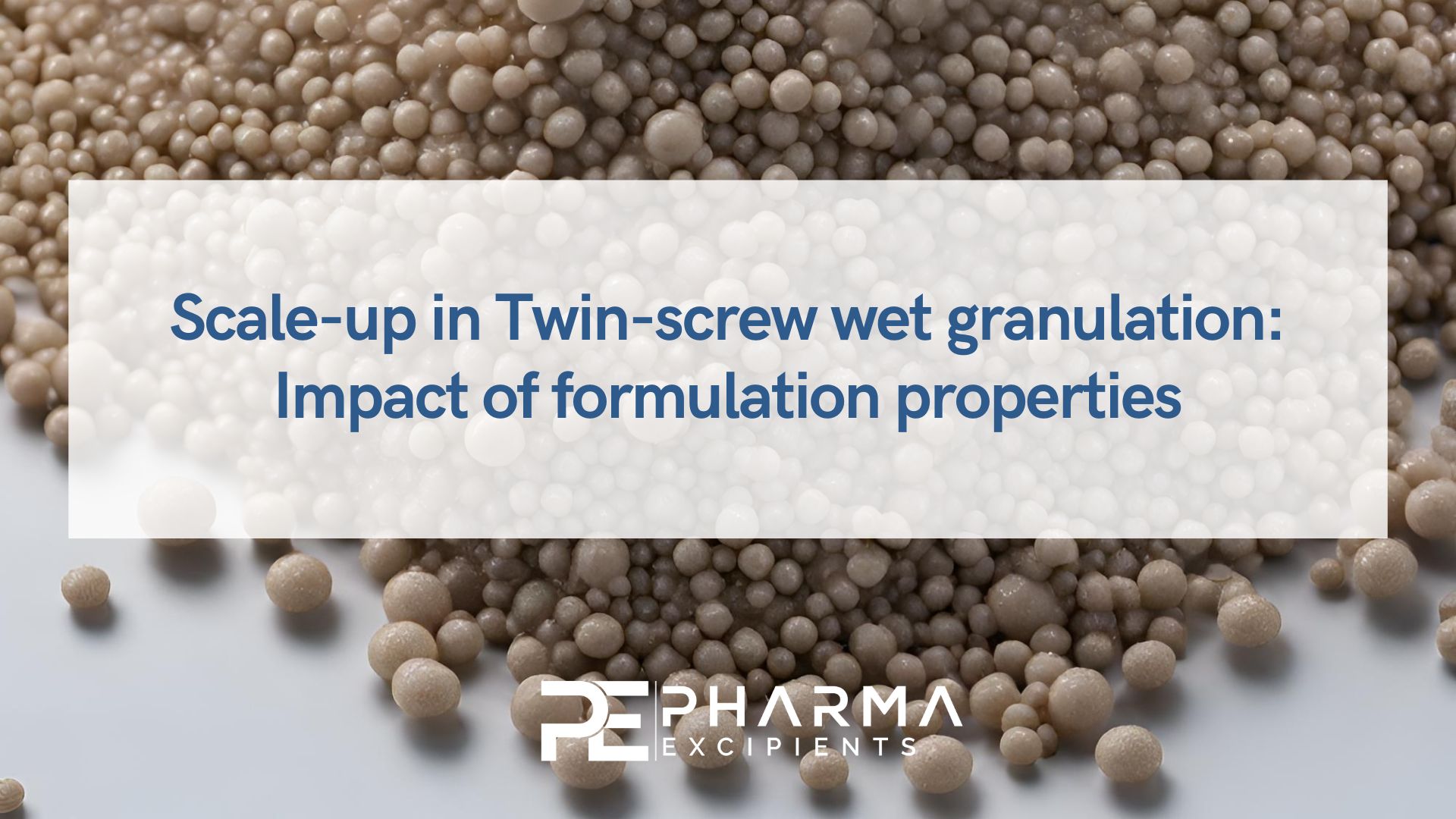Scale-up in Twin-screw wet granulation: Impact of formulation properties

The focus of this study was to investigate the sensitivity of different drug formulations to differences in process parameters based on previously developed scale-up strategies. Three different formulations were used for scale-up experiments from a QbCon® 1 with a screw diameter of 16 mm and a throughput of 2kg/h to a QbCon® 25 line with a screw diameter of 25 mm and a throughput of 25kg/h. Two of those formulations were similar in their composition of excipients but had a different API added to the blend to investigate the effect of solubility of the API during twin-screw wet granulation, while the third formulation was based on a controlled release formulation with different excipients and a high fraction of HPMC. The L/S-ratio had to be set specifically for each formulation as depending on the binder and the overall composition the blends varied significantly in their response to water addition and their overall granulation behavior. Before milling there were large differences in granule size distributions based on scale (Earth Mover’s Distance 140-1100 µm, higher values indicating low similarity) for all formulations. However, no major differences in granule properties (e.g., Earth Mover’s Distance for GSDs: 23-88 µm) or tablet tensile strength (> 1.8 MPa at a compaction pressure of 200 MPa for all formulations with a coefficient of variation < 0.1, indicating high robustness for all formulations) were observed after milling, which allowed for a successful scale-up independent of the selected formulations.
Read more
(2023) Scale-up in Twin-screw wet granulation: Impact of formulation properties, Pharmaceutical Development and Technology
https://doi.org/10.1080/10837450.2023.2276791

